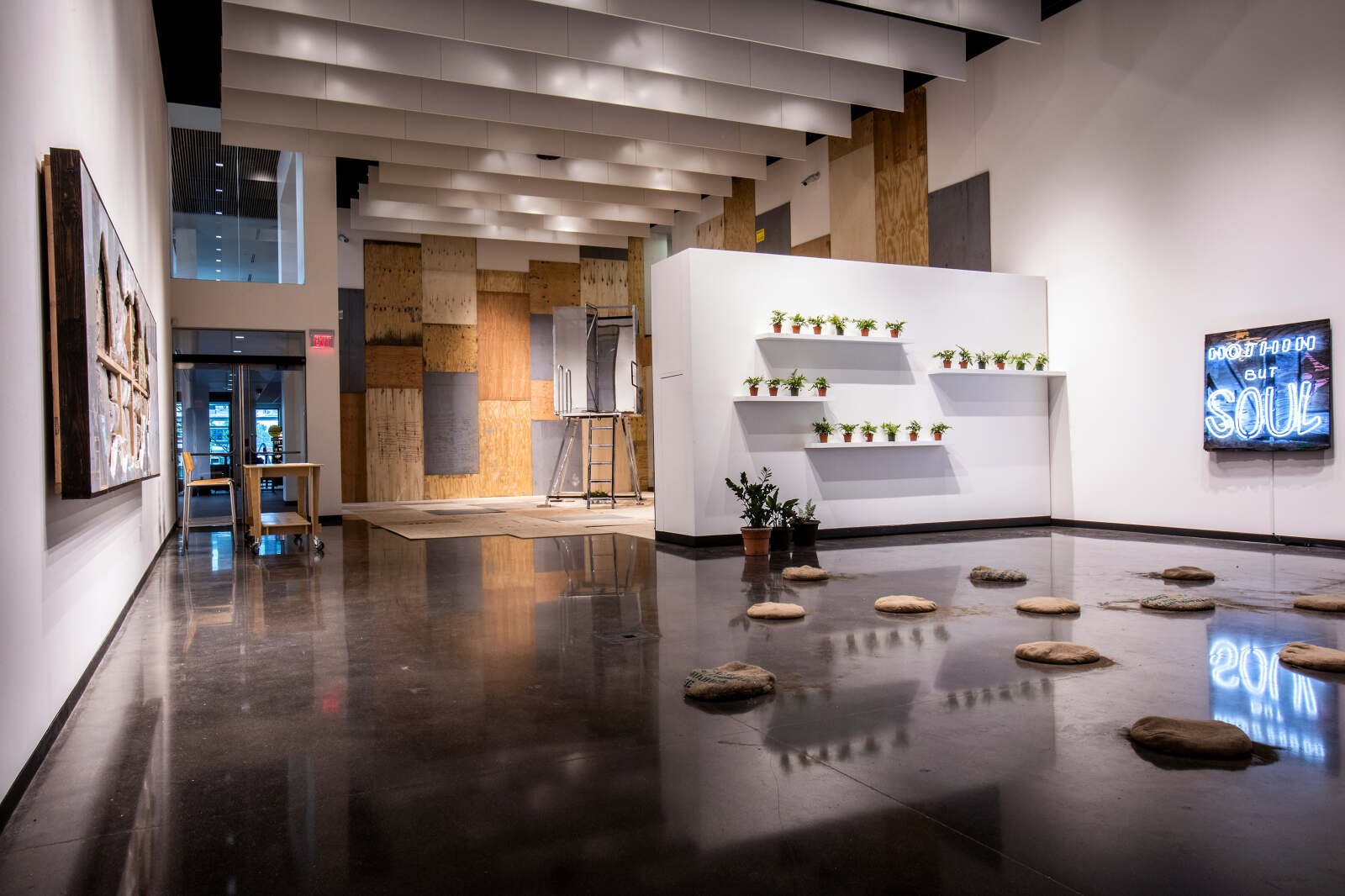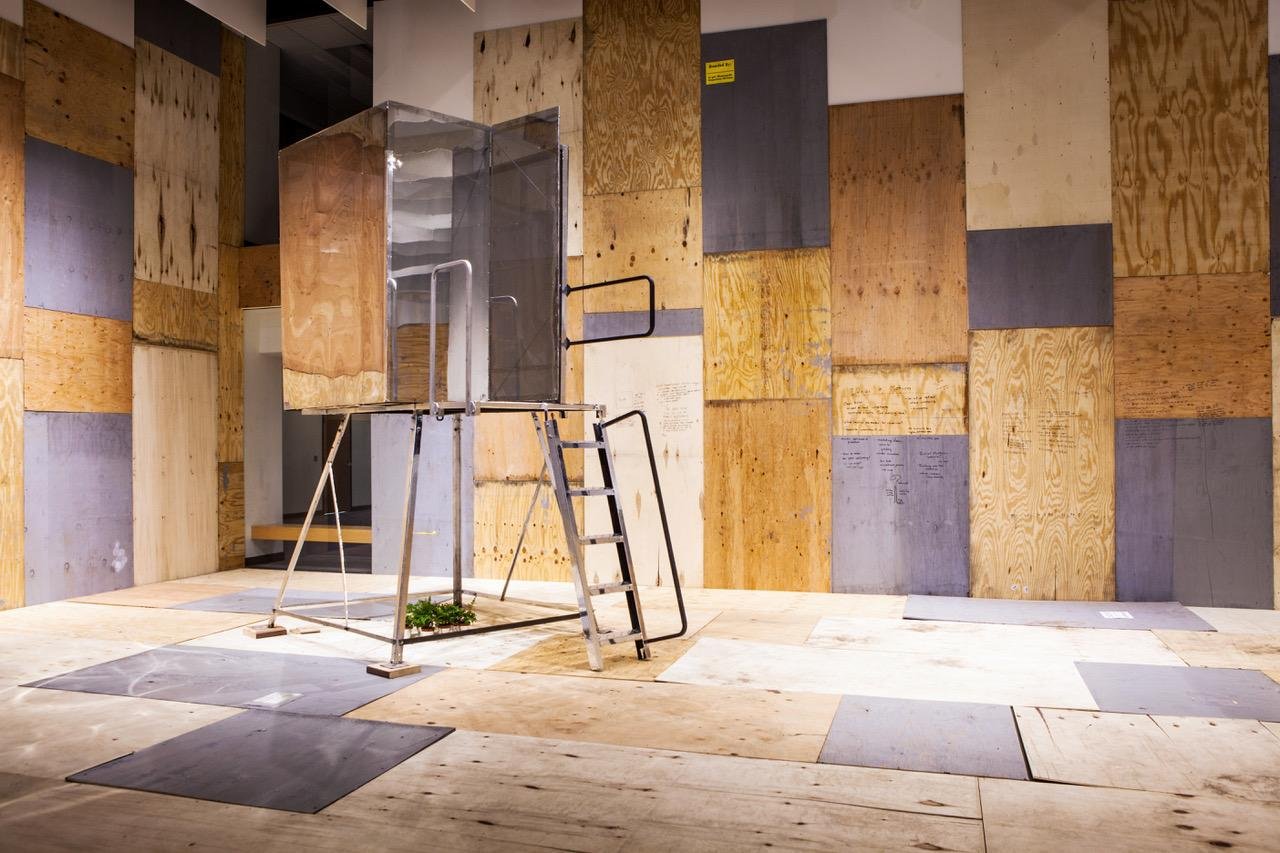Jordan Weber: Meditations on Safety
Catalog essay for Jordan Weber: kNOw Spaces, 2018
Exhibition curated by Jehra Patrick for Law Warshaw Gallery, Macalester College, St. Paul, MN
Breathing fully and freely is the birthright of all human beings and yet “that essential act of life...is often constrained or denied to people of color.” Across the United States, communities of color are treated as dumping grounds for toxic waste that sickens and kills the people who live there. Studies repeatedly confirm the unequal burden of environmental hazards: In 1983, multiple organizations, including the U.S. General Accounting Office, concluded that “race was so strong a statistical predictor of where hazardous waste facilities could be found that there was only a one-in-10,000 chance of racial distribution of such sites occurring randomly.” Some ten years later, the Environmental Protection Agency (EPA) reported that toxic waste facilities were more likely to be sited in Black communities nationwide. And earlier this year, as the Trump Administration worked to reverse policies created to reduce these inequities, the EPA reported that people of color, especially those living on low incomes, “are much more likely to live near polluters and breathe polluted air.” Communities of color are not only over-exposed to particulate matter, but also to poverty, police brutality, and other forms of environmental violence. It’s for these reasons that Eric Garner’s final words became a rally cry: “I can’t breathe” signifies his death at the hands of police as much as the larger systematic chokehold—the gross scheme of social, economic, and ecological oppression under which people of color live in the United States.

